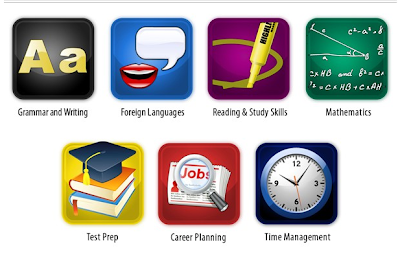Time, nothingness and imagination
Posted in Labels: classroom discussion, imagination, nothingness, philosophy for children, timeAnother marvelous conversation last week with the 5th grade students with whom I've been working all year. At the beginning of the school year, one of the questions in which the students were interested was, "What is time?" We began this session with that question.
One student suggested that time is the way "we measure how long different units in the day are, so that we know exactly at what point in the day we are."
"Would time would still exist if we weren't around to measure it?" I asked.
"Maybe time is nothing," one student suggested.
"There's no such thing as nothing," responded another student.
"I think that's right," a third student agreed. "I say, 'I have nothing in may hand,' but of course it's not true. There's air in my hand, for example. Everything is something, so there is no such thing as nothing."
"That's right. We just say there's nothing in our hands because that's the only word we can come up with to describe it."
"We think of 'something' as being solid. And air isn't solid, so we think of it as nothing. But it is something."
"If nothing is something, it's not nothing. So if we're asking what nothing is, there can't really be an answer."
We talked about trying to imagine "nothing." We tried to imagine the absence space, and couldn't.
"It's not possible. There's nothing we can refer to."
"When there's a totally new idea like that, like a new color we've never seen, we have no way to think of it. Everything we can think of is based on something we've seen, heard or know about. Our imagination is not based on some magical thing, but on what we've experienced."
"Actually, we wouldn't experience anything without our imaginations."
"What do you mean?" I asked.
"Well, everything we do is because of our imaginations. We wouldn't even be able to move without imagination."
"Yeah, humans would probably have died out a long time ago without imagination. We wouldn't have survived if we couldn't imagine how to build things and do all kinds of things."
We talked about the nature of imagination, and one student said that really, then, all we experience in the world is through our minds. So how do we know that anything else exists? I explained a little about Berkeley's view that we are able only to know sensations and ideas. In the course of our conversation, I told the students about Johnson's attempt to refute Berkeley's view by kicking the rock.
"That doesn't prove anything!" one student protested. "All he showed was that he felt that he was kicking a rock, which was all in his mind."
"Everything we experience is because of our thoughts. So whether the rock is there or not, the pain I feel when I kick it is just in my mind."
"Hmmm," a student replied. "Think about the lyrics to 'Row Row Row Your Boat.' What do you think?"
"Is life just a dream?"
"I think that's really scary."
"When I was little, my brother told me that life was just being characters in a book someone else wrote. Maybe we are just characters in a book."
"If we are, I wouldn't want to know about it."
We talked a little about whether it would make any difference, if the world felt exactly the same as it now does to us, if it turned out that we were characters in a book. The conversation ended just before the bell, with us reflecting that our thoughts are the lens through which we experience the world, and that we can control how our experiences feel to us by thinking about them in certain ways.

















